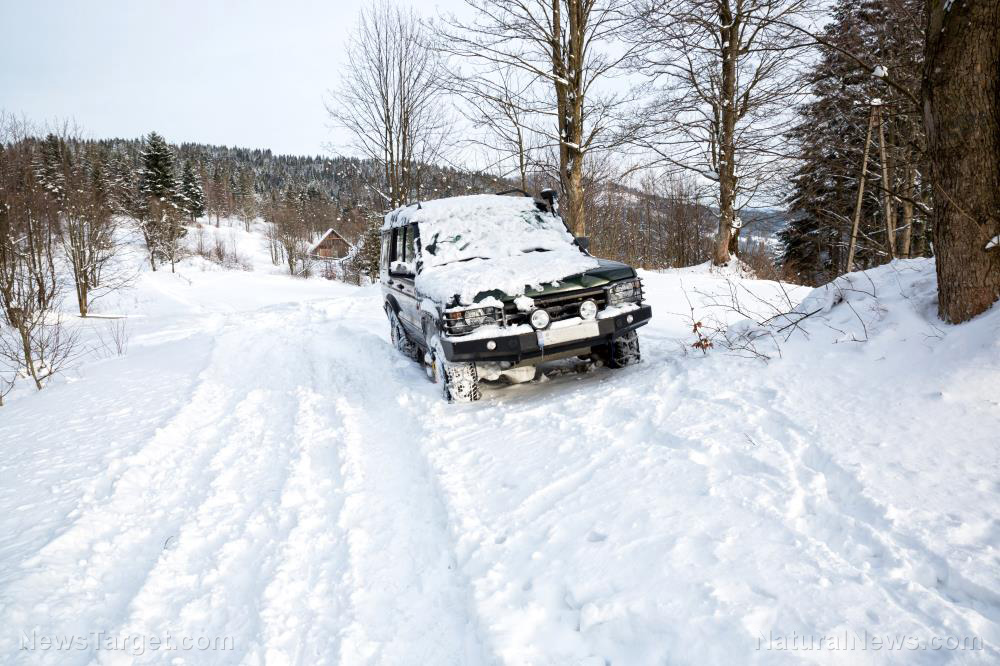Gypsy moth caterpillars damage trees, threaten forests in northern US
07/01/2021 / By Ramon Tomey

An outbreak of gypsy moth caterpillars (Lymantria dispar) has hit parts of the northern U.S. and Canada. The insects, which came in higher numbers than before, have caused “noticeable leaf damage” to trees and have impacted forests. Residents have also complained that the caterpillars, whose diets consist of leaves from different tree species, have stripped trees and other plants clean.
Many Americans living in the northern U.S. shared stories of the infestation. Johnstown, New York resident Will Wilkins told NEWS10 that the 2021 gypsy moth caterpillar outbreak is “way, way worse than last year.” He said: “I’ve got … all kinds of trees around me, [and] the infestation is just unbelievable. They have taken the leaves off everything.”
The Fulton County resident added that the bugs had also targeted fruits he grew. “Seven apple trees and probably 16 blueberry bushes, and they’re just wiped right out,” Wilkins lamented.
Schuyler County resident Shannan Warwick told Syracuse.com that the caterpillars have attacked the oak, apple and pine trees on her five-acre property. She was forced to move picnic tables in her backyard to avoid the insects’ droppings hitting the furniture. Warwick said: “It sounds like it’s raining in the backyard. It’s really disgusting.”
Bitely, Michigan resident Rebecca Guizar told FOX 17 that the gypsy moth caterpillars are everywhere – on her roof, on the tires of her husband’s tractor and on almost every tree on her property. The insects did not spare her apple tree that was supposed to produce fruit this year. “You feel them crawling on you, even when they’re not on you,” Guizar said.
The gypsy moth caterpillars had also reached Canada and impacted Ontario province. Toronto Mayor John Tory told Canadian news channel CP24: “We’re certainly well aware of the fact [that] it’s a bad year for these gypsy moth larvae. [We] are doing our best to deal with it.” The mayor of Ontario’s capital added that there are “measures being taken” to treat trees damaged by the caterpillars.
Meanwhile, councilors in the city of Barrie deliberated June 21 on a motion to have city staff look into the use of aerial spraying or pheromone traps to address the insects. Barrie Councilor Robert Thomson said around 40 to 50 residents reached out to him about the caterpillars. “People pay taxes and their backyards are uninhabitable. They can’t even go out and enjoy them and I just think we’ve got to look into this,” he said.
Gypsy moths have been an invasive species for more than a century now
The gypsy moths are not a species native to the U.S. According to the New York State Department of Environmental Conservation (DEC), the moths were “accidentally introduced” in 1869. They were brought to the U.S. in an endeavor to develop a native silk industry by breeding them with regular silkworms (Bombyx mori). The attempt did not bear fruit, and some of the moths escaped and established their first population in Massachusetts.
The DEC unfortunately did not have any eradication method for the hordes of caterpillars – to the disappointment of affected New Yorkers. However, its website said the caterpillars will start to disappear in July as they become moths.
The state environmental agency recommended a number of methods to use against the gypsy moth caterpillars, with knocking the eggs off of trees among them. “Egg masses can be destroyed by scraping them off trees or other structures and dropping them in a container of detergent,” it said. But the DEC also warned against directly touching the caterpillars as “the hairs on [their] backs can cause mild to moderate skin irritation in some people.”
Bernie Grafe of pest control firm Orkin Canada also recommended the same method to prevent future gypsy moth caterpillar outbreaks. “[At the] beginning of spring, you’re going to inspect those trees. Look for the little gray eggs, remove those and put those in soapy water,” he said.
However, some residents complained that individually drowning caterpillars was impractical. Glenville, New York Town Supervisor Chris Koetzle said: “They’re talking about individually downing the [caterpillars, when] there are millions of them. [That’s] not really practical, so we’re kind of stuck in a situation right now where we don’t have a lot of answers to address this problem.”
Visit Ecology.news to read more news about the damage caused by gypsy moth caterpillars and other insects.
Sources include:
Tagged Under: Barrie, Canada, Department of Environmental Conservation, forest damage, gypsy moth, gypsy moth caterpillars, infestation, insect outbreak, invasive species, leaf damage, Michigan, New York, Toronto
RECENT NEWS & ARTICLES
COPYRIGHT © 2017 ENVIRON NEWS





















